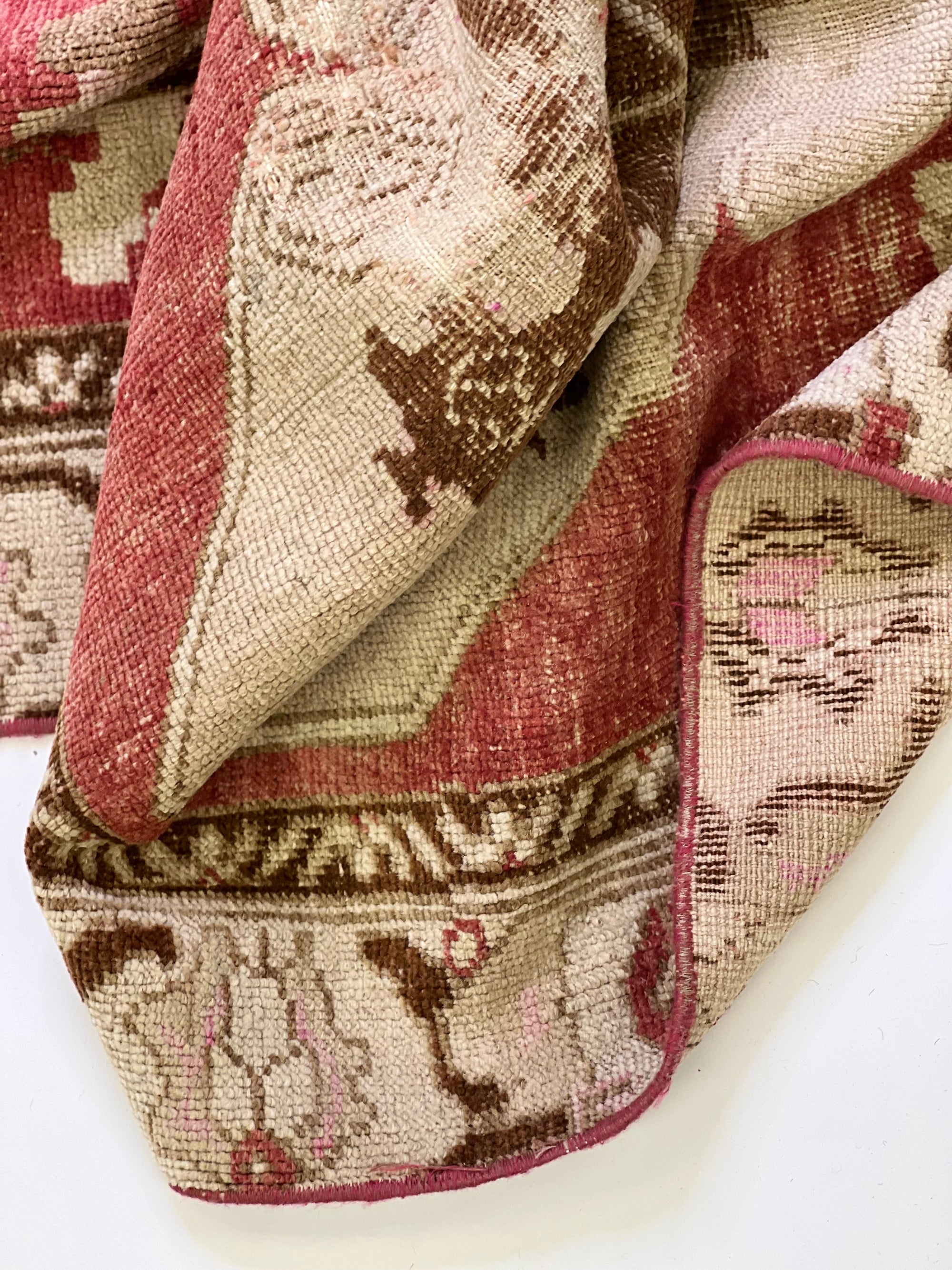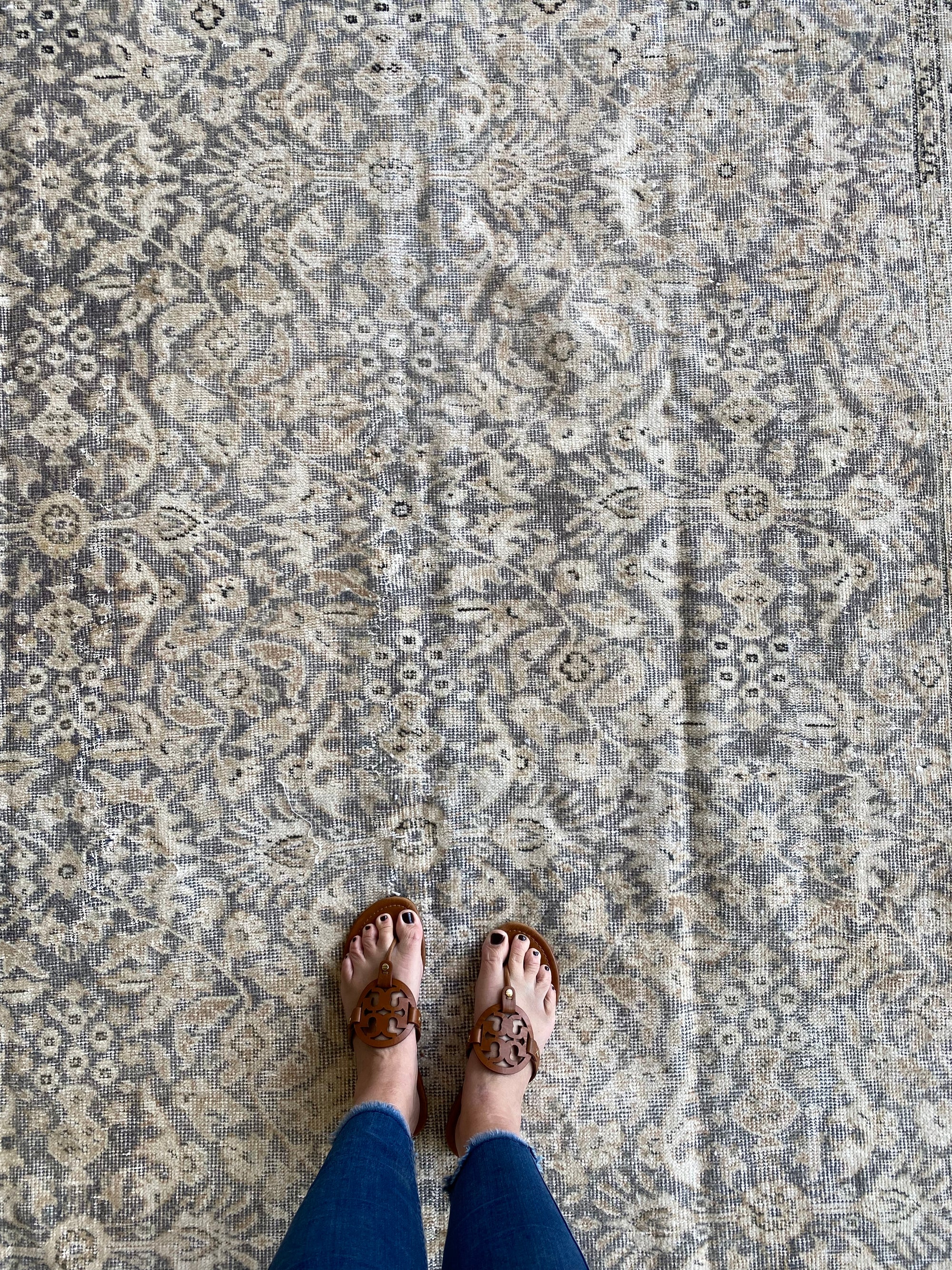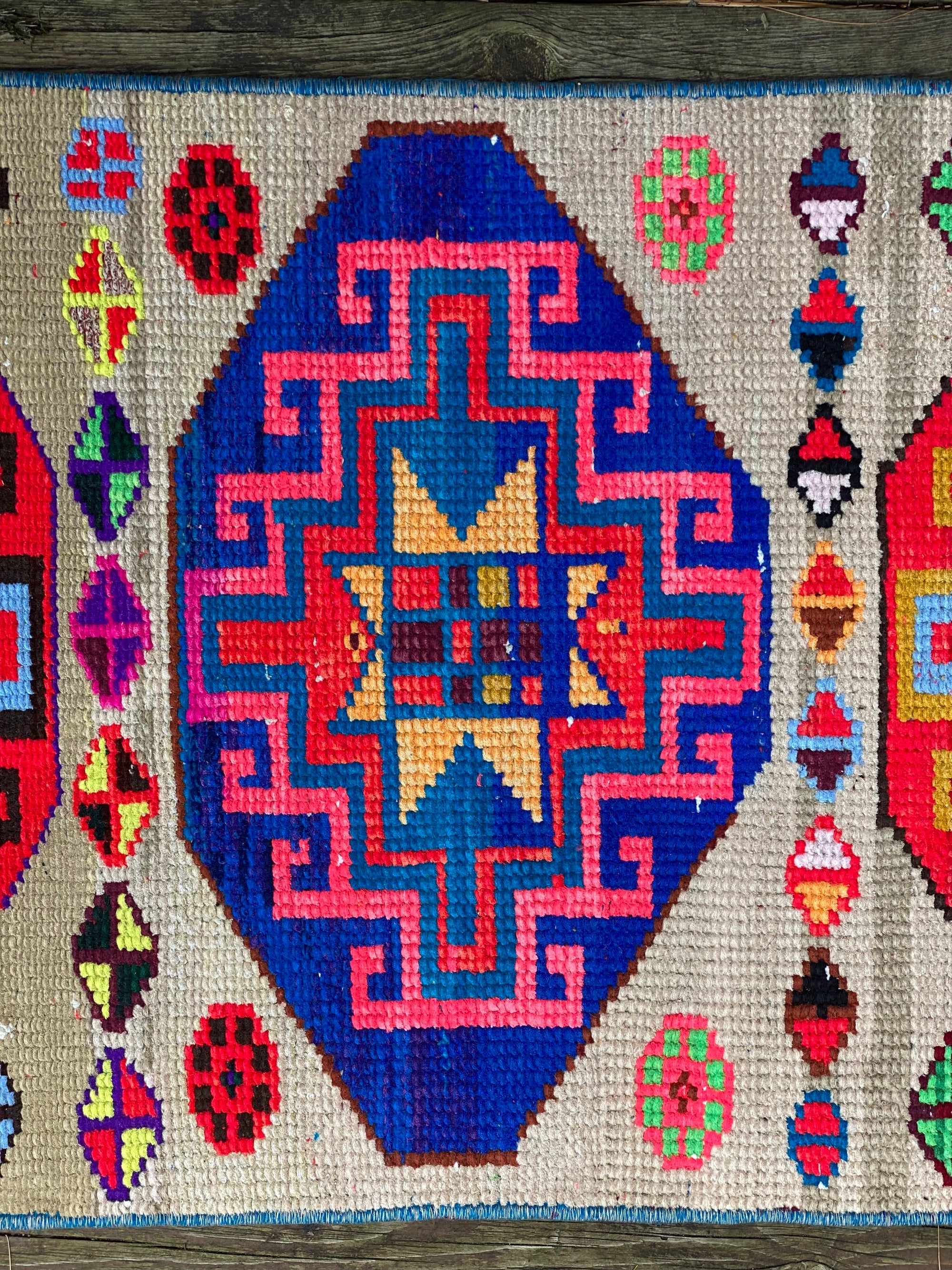We should probably define what makes a rug antique or vintage to begin; antique rugs are at least 100 years old, semi-antique are 50-80 years old, while vintage rugs are over 20 years old.
Yikes, right? 1999 is vintage. When you’re searching for a new old rug, you’re going to see quite a few different terms bandied about; it can be confusing and feel overwhelming. My hope is to help guide you through the process and provide some fun history along the way. If your question is not answered with this glossary, feel free to reach out to me, I’m happy to help.
- Abrash – Differences in the same color dye, along a horizontal line in a rug. Dye can take differently to wool, or different lots were used in the weaving process. Look for it, it’s cool and makes the rug unique and interesting.
- Allover design – A repeating or design across the entire rug, either in a grid or randomly placed.
- Anatolian rug – A generic word used to describe hand knotted rugs from Turkey or the Ottoman Empire.
- Aubusson – A type of rug woven in France, with pastel colors.
- Border – A pattern line that follows the four sides of the rug, to frame in the main pattern. Many times, you’ll see a wave type pattern, which signifies water.
- Caucasian – An area in the Caucasus Mountain range, rugs from this area are typically woven in primary colors with bold patterns.
- Chemical wash or ‘antiquing’ – A chemical or bleach wash of a rug, to distress and make the rug appear older than it is. It’s fairly popular style right now, you should ask if the rug has been chemically processed or is naturally distressed. The chemicals do break down the wool fibers, shortening the life of the rug – the jury is still out on how this will affect an heirloom rug over time.
- Cotton – a natural fiber, used as the foundation for most rugs.
- Density – the number of knots per inch and pile height.
- Dead wool – yuck. Wool taken from dead animals, by soaking in chemicals to remove the shorter wool fibers. This reduces the strength and luster of the wool. Rugs made from dead wool are poor quality, you’re going to find these rugs at your popular home décor stores.
- Dyes – This needs an entire article written about it. Dyes are either vegetable/flora or synthetic. Older rugs are vegetable dyed, synthetic dye was popular for quite a while and now we’re back to vegetable dyes. Mostly. Let’s hope so.
- Flat weave rug – A generic term to describe a rug without pile, or a rug that the pile has been shaved down. Google rug shaving, they're fun videos to watch.
- Gabbeh - A tribal rug with longer, plush pile. Usually earth tones, such as brown and khaki, but can also have vibrant colors. Gabbeh rugs were woven for personal use, not for commerce, to keep homes warm. Now a collectible rug, and one of my personal favorite types of rugs.
- Hamadan – A smaller, scatter Persian rug. Woven in Iran and also by the Kurdish.
- Hand Knotted - A rug made by hand on a horizontal loom. Each knot is made by tying around the warp and weft, and the ends of the knots cut to create the pile. This is extremely taxing, meticulous work, taking months to create a rug.
- Heriz – Typically a room size, large rug with deep rich colors. Large medallion in the center with angular curves.
- Indo – When you see rugs marked ‘Indo Turkish’ or ‘Indo ….’, they are a replicate of an older rug. These rugs are made in India. You’ll often find it included in descriptions as a Vintage Indo Turkish rug. Meaning it’s a replica of a Turkish rug, made in India. Nothing wrong with rugs made in India, just be aware it’s a reproduction.
- Kilim – A flat weave, weft faced textile without pile.
- Nomadic rug – Rugs wove by nomadic tribes on portable looms.
- Oriental rug – Any rug made in Asia. Generic term.
- Oushak – A rug woven in the western area of Turkey, typically with a center medallion, an allover pattern of vines or flora, or repeating patterns.
- Persian Rug – Rug made in Iran or Persia. Typically, very high quality. We are not allowed to import rugs from Iran, so Persian rugs are more difficult to come by.
- Pile – The surface, the cut ends of the knot. Pile can be flat, plush, and long.
- Sarouk rug – Persian rugs from the Arak region of Persia, with a mostly all over pattern of floral and vines. Usually deep red or rich dyes.
- Serapi rug – Rugs from the village of Serab in Iran and considered to be the finest of the rug from Persia/Iran. Serab is in the Heriz area of Iran, with Serapi basically a trade name given to the highest quality rugs. These rugs are tens of thousands of dollars.
- Tabriz – A very good quality rug from NW Persia. Designs are all over patterning to medallion, using rich dyes to pastel lighter shades.
- Turkish Rug – A rug made in Turkey using a Ghiordes knot, or symmetrical double loop knot process.
- Turkoman – Refers to a repeating geometric pattern that originated in nomadic tribes in Asia. Often the pattern resembles an elephant foot and is called the Elephant Feet design. Surprise!
- Yastik rug – Small cushion covers now used as rugs from Anatolia.
Red Flag Terms
- Serapi Heriz Tabriz whatever whatever – When you see a listing using several key terms in the description, think twice. It could be a reproduction, or from a unscrupulous dealer. I see this description a lot, but it’s not right. A real Serapi rug would be tens of thousands of dollars, and I would hope the seller would know the right terminology. That said, we’re all human and we’re all allowed mistakes. Ask questions.
- Vintage Inspired rugs – Just no. These are rugs from big box stores or online companies, that could use child labor. Maybe, who knows. They’re mass produced, made of inferior wool or plastic made to look like an heirloom rug. Buy the vintage, heirloom rug, it’ll cost you less over time, and last decades. Why would you want a plastic distressed rug, or an inferior wool rug that's been machine distressed?
- Hand Crafted rugs – I don’t know what this means. Put by hand into a machine? Child labor? Women forced to make rugs in factories? What. Does. This. Mean. Ask questions, call the company, and find out.
Thank you for reading, and I will continue to add terms to educate you, as I find them.


